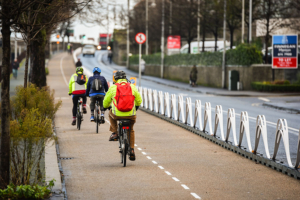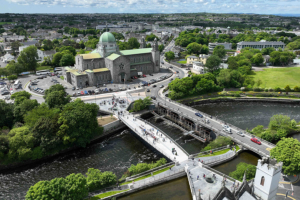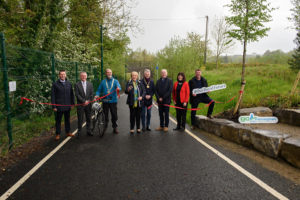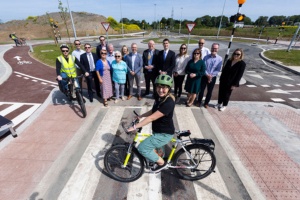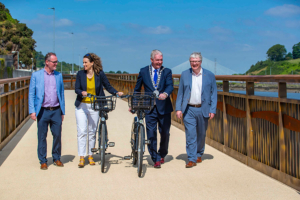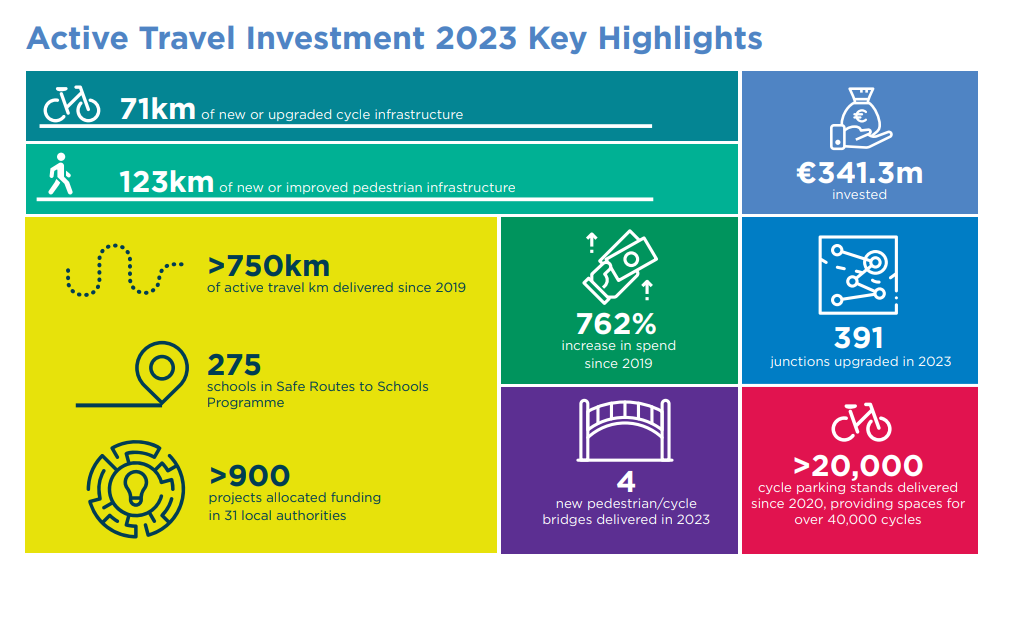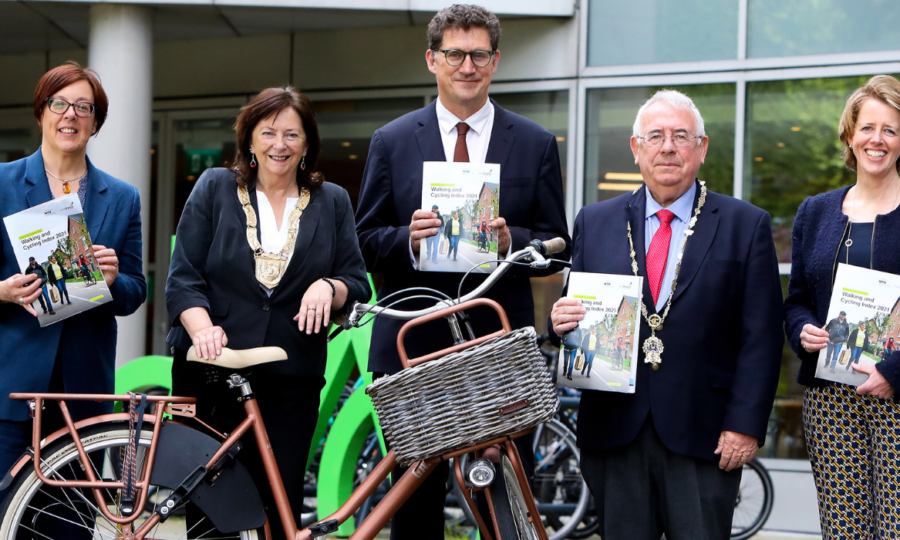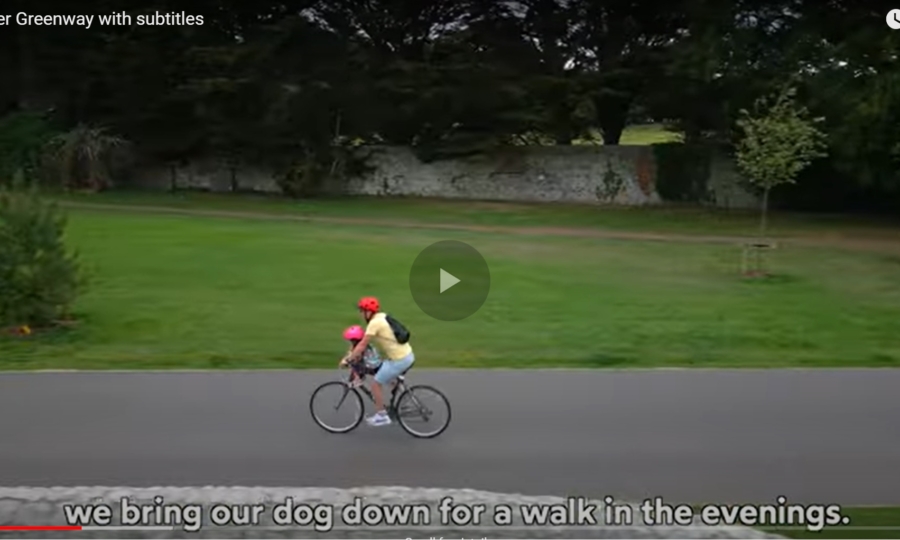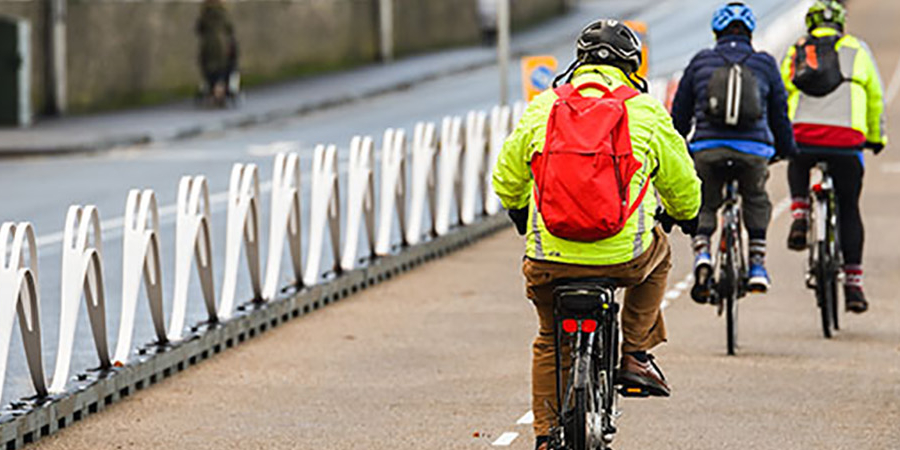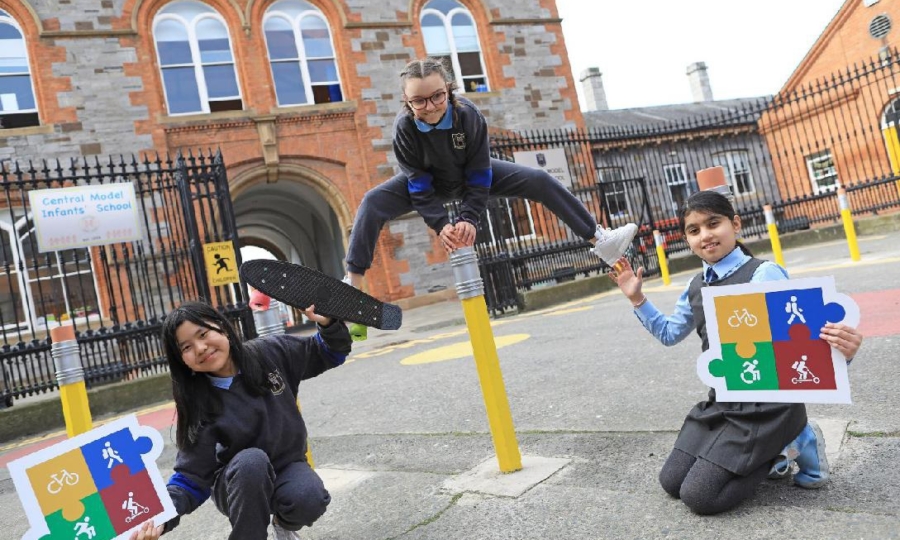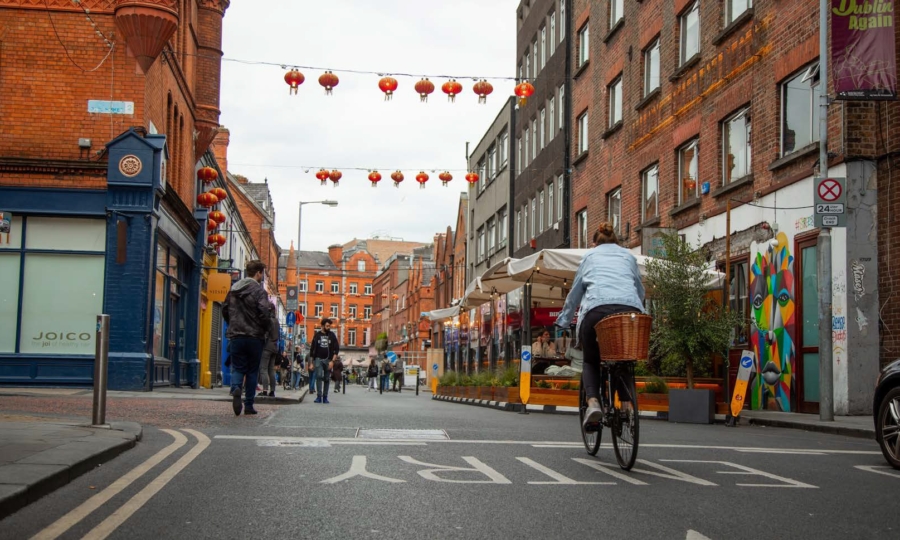What is Active Travel?
Active Travel involves travelling with a purpose, using your own energy via sustainable means. It includes walking, wheeling, and cycling or the use of self-powered, non-motorised scooters as part of a purposeful journey. For example, walking to school and cycling to work are both considered forms of Active Travel.
What role does the NTA have in Active Travel?
The NTA has a dedicated Active Travel team who work in collaboration with Local Authorities across the country on the delivery of hundreds of Active Travel projects. This includes the development of segregated cycle lanes and widened footpaths, new walking and cycling bridges, and new pedestrian crossings.
The work of the NTA’s Active Travel Programme is underpinned by the aims and objectives set out in the Government’s Climate Action Plan 2023. One of the key aims cited is to increase the number of walking and cycling networks so that walking, cycling and public transport will account for 50% of all journeys made by 2030.
Projects are funded by the Department of Transport through the National Transport Authority’s Active Travel Programme and are managed and delivered by the Local Authorities. In 2023, 290 million euros was allocated by the NTA to enhance the delivery of hundreds of projects including a new cycle and pedestrian bridge over the N40 in Cork, connecting to Tramore Valley Park, and the connection of the Waterford Greenway from Bilberry into the heart of Waterford City Centre.
- Coastal Mobility Route Dun Laoghaire
- Aerial view: ‘Salmon Weir’ Bridge Galway
- Minister Ryan opens ‘Salmon Weir’ Bridge Galway
- Upgrade of Monaghan Greenway
- Cyclists try out Ireland’s first cycle friendly Roundabout – Fingal
- Bilberry to City Centre Waterford Greenway
By 2025, the NTA aims to have delivered in excess of 1,200 projects equating to 1,000km of combined cycling and walking routes nationwide.

